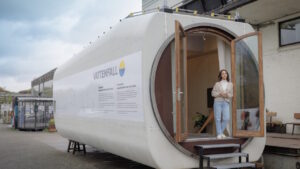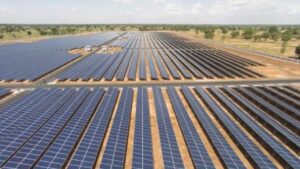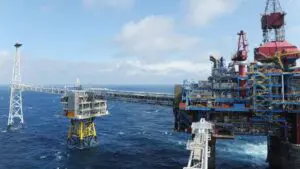The Queensland Labor government has underlined its support for large-scale renewable energy development in the state with the signing of support deeds for three separate large-scale solar projects totaling almost 100MW of new generation capacity.
The solar deeds aim to secure long-term revenue certainty for the 98MW of regional solar projects planned for development near Collinsville, Oakey and Longreach, allowing the developers of each to reach financial close and begin construction.

The projects include Edify Energy’s $112 million 58MW Whitsunday Solar Farm; and two Canadian Solar projects – the $29 million 15MW Longreach Solar Farm and the $48 million 25MW Oakey Solar Farm.
Queensland Premier Annastacia Palaszczuk says the inking of the deeds coincided with the approval of the Environmental Impact Statement for the Coopers Gap wind farm near Kingaroy.
Coopers Gap – which is being developed by AGL Energy as part of the Powering Australian Renewables Fund (PARF) between AGL, QIC and the federal government’s Future Fund – stands to be the largest wind farm in Queensland, with approval for 460MW in capacity.
“These projects represent a $700 million investment in energy projects and in regional Queensland jobs,” Palaszczuk said on Monday.
“The confidence shown in Queensland’s renewable future by these leading energy companies, from overseas and interstate, shows that my government’s policy settings have created an environment ripe for serious and sustainable investment.”
Large-scale solar has been slow to take off in Australia’s Sunshine State, but according to a draft report on the Labor government’s 50 per cent renewable energy target, Queensland will have some 5,200MW of large-scale solar PV capacity by 2030.
The report, published in October last year, predicted that solar – in all its forms – would account for most of the 14,100MW capacity needed to provide the 30,000GWh of electricity needed to meet the state’s 50 per cent target, and the bulk of the new capacity when Queensland “goes it alone” after the federal target expires.
Queensland energy minister Mark Bailey said the execution of the solar support deeds this week confirmed the three projects’ inclusion in the state’s Solar 150 program, which provides a 20 year revenue guarantee, meaning financial contracts can be delivered and construction can begin.
“These projects are a sign of the times for regional Queensland’s major role in shaping the state’s transition to a renewable energy economy, and during construction will bring 196 much-needed jobs to the regions,” Bailey said on Monday.
“Upon completion, these projects will supply a combined 98MW of clean energy into the surrounding regions, bringing more generation capacity to the surrounding communities and industries.”
Edify Energy Chief Executive John Cole said with the deed signing complete, he expected to finalise investment and begin construction for the Whitsunday Solar Farm in the near future.
“The Queensland Government’s Solar 150 program, and the federal government’s ARENA large scale solar grant funding program had been instrumental in securing investment from our long term equity partner, Wirsol, to make the project a reality,” Cole said.
“We hope to build on the momentum the Whitsunday Solar Farm has provided to advance further projects in Queensland in very short order.”
Canadian Solar general manager Daniel Ruoss said the 15MW Longreach project would employ 30 people during construction, while the 25MW Oakey project would bring with it 50 construction jobs.
“Since 2014, Canadian Solar has been investing millions of dollars in Queensland for project developments and the company collaborates closely with local stakeholders to maximise the benefits for the local region and its communities,” Ruoss said.
“We expect to begin construction on both projects in May 2017 and be grid connected in early 2018.
“The Oakey project will also have a second stage involving an additional 55 megawatts commencing construction in the second half of 2017.
“We’ve chosen Queensland for our investment because of its world-class resources, great infrastructure and a forward looking Government. Queensland is truly the Sunshine State.”









